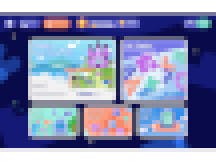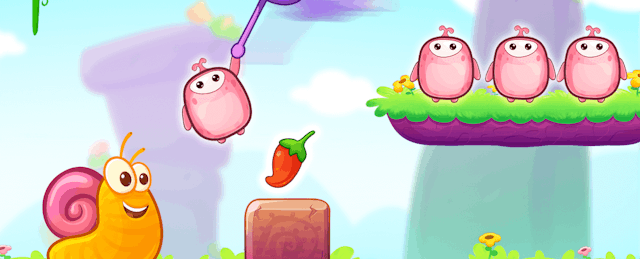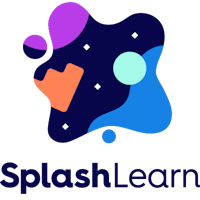Time and again, there have been education techniques and pedagogy developed that challenged conventional teaching and learning methods. As new approaches are tried, it is important to also analyze the reasons why children may be apprehensive about learning.
Educators have long used games to promote learning and deepen student understanding of subject matter. Games can be particularly effective for engaging learners, promoting active participation and motivating students, both in and outside of the classroom. But for SplashLearn CEO Arpit Jain, it is important to make a distinction between gamification and game-based learning (GBL). Whereas games and gamification are often focused on external rewards, game-based learning relies upon intrinsic motivation.
For 10 years now, Jain and his team have led an international effort to transform how students learn by engaging their curiosity and instilling a love of learning. SplashLearn’s game-based learning platform—available in 150+ countries and already used by more than 40 million children—features thousands of research-informed games aimed at instructing young learners in English language arts and math. EdSurge recently spoke with Arpit Jain about his approach to problem solving and his future aspirations—both for the company and the world of education.
EdSurge: What inspired you to create SplashLearn?
Jain: I grew up in a middle class family in India and was taught to believe in the transformational power of education. Personally, I was a good student, especially in math—I loved math. However, most of my friends did not share the same natural enthusiasm and continually asked for my help.
I realized as a young student that math could be powerful if taught with a more engaging, real-world problem-solving approach. When we are young, we are curious and excited to learn. But as we advance through school, we often become less engaged and interested.
The problem, essentially, is our approach to teaching and learning. Unfortunately, we have often deterred curiosity in school. Whether it's textbooks, or even digital content in videos, too much of our instructional content and approach is static. We also suffer from a high student-to-teacher ratio, and this is a somewhat global issue. All of this has contributed to too great a focus on finishing a set curriculum, then trying to assess all of it, versus meeting the needs of all students. This ends up leaving a large number of students behind, and far too many of them become unmotivated and disengaged.
This was the impetus for SplashLearn. We decided to focus on the internal motivation in game-based learning and lead a foundational shift. The games and playsheets within SplashLearn aim to shift the current narrative around learning, turning it into an experience that augments the child's desire to learn by making learning itself rewarding for every child.
SplashLearn has interactive, self-paced and adaptive formats that engage learners and increase learning outcomes. They provide educators with easy-to-implement tools along with immediate feedback on the performance of their students. This leaves them with ample time to focus on students who might need their help to improve.

In what ways has the perception of game-based learning changed in recent times?
The perception around game-based learning has improved in the last 10 years. Research and efficacy studies have really had an impact. The recent global dive into online learning has demonstrated the value of engaging students this way.
What we have seen is that schools typically have budgets for core curriculum, supplemental and then game-based or technology-based curriculum, in that order. We advocate for that to change, and fortunately some are approaching it differently now. We encourage them to examine what’s best for their learners and give these new learning methods a chance to cover the core curriculum.
Educators are becoming aware of the contrast between gamification and game-based learning. Gamification in learning is essentially adding a layer of game-based motivators around the learning core. Although it can increase motivation, It does not change how a student actually learns the subject matter. We can understand the interest in taking something that appears tedious and making it more entertaining by adding extrinsic motivators. These are often in the form of things such as rewards, badges and leaderboards.
In contrast however, game-based learning uses games to transform how students learn. The primary intent behind GBL is not to enhance the entertainment value, but to improve pedagogy and make learning more effective. If done well, GBL can positively transform the learning experience of a student. At SplashLearn, we do this through a lot of rich contexts, embedded instructions within games, meaningful interactions and playful manipulatives. Finally, GBL can also make the learning more relevant. For example, a skill wrapped in an interesting story can enhance the motivation to learn the skill multi-fold, and it also increases the recall value by building an emotional connection with the student to the learning.

What distinguishes SplashLearn from similar educational platforms?
At the heart of SplashLearn's curriculum and games is the suite of pedagogical models and digital manipulatives that act as the bedrock of its interactive learning ecosystem. It is also very important for us to create a strong differentiator in quality content presentation and hence, research and innovation are constant features in building our products. We have processes that allow us to innovate faster and create research-backed games at scale. We also regularly interact with the key stakeholders, including parents, teachers and learning scientists across the world to take input and feedback for our products.
We have a unique business model. We are set up to offer SplashLearn free to all teachers and schools to use while students are at school. Parents can subscribe to support their children after school, but we are fully committed to providing SplashLearn free to all educational institutions.
Our content, too, is intended to create engaging learning experiences that build skills. We create individual paths for each learner. This reduces the burden on the teacher. We design ways for learners to experience real-world simulations in order to apply or transfer their learning. Additionally, teachers can check for mastery and understanding to support each student’s learning plan. The game-based learning platform has demonstrated the same rigor and relevance as standard education and offers much more.
Finally, we also feature some fantastic collaborative opportunities. We created SpringBoard as an annual challenge that rewards entire classrooms, not just individual students. The SpringBoard Math Challenge is designed to motivate school students to practice and master key skills so they end the school year with math confidence, well prepared to advance to the next grade, all while winning fun prizes and competing with other classes across the country. 30,000 classes and 600,000 students are participating in the competition this year.
Learn more about this year’s SpringBoard Math Challenge.
You recently raised a series C round with Owl Ventures and Accel. How will you use those funds?
We are free for schools. So, we will use this funding for marketing and awareness in order to expand our presence both in the US and internationally. We will also use some to grow SplashCourses—an online tutoring product that offers affordable classes for K-5. The tutoring product was launched in the first half of 2020, owing to growing demand from parents and teachers. The focus of SplashCourses is to inculcate discipline with regular practice and provide personalized help to children so they can meet their learning goals.
We are also going to use this funding to expand our English language arts program. Although math is already PreK-5, ELA is only PreK-2. We are excited about expanding our ELA to PreK-5 as well.



